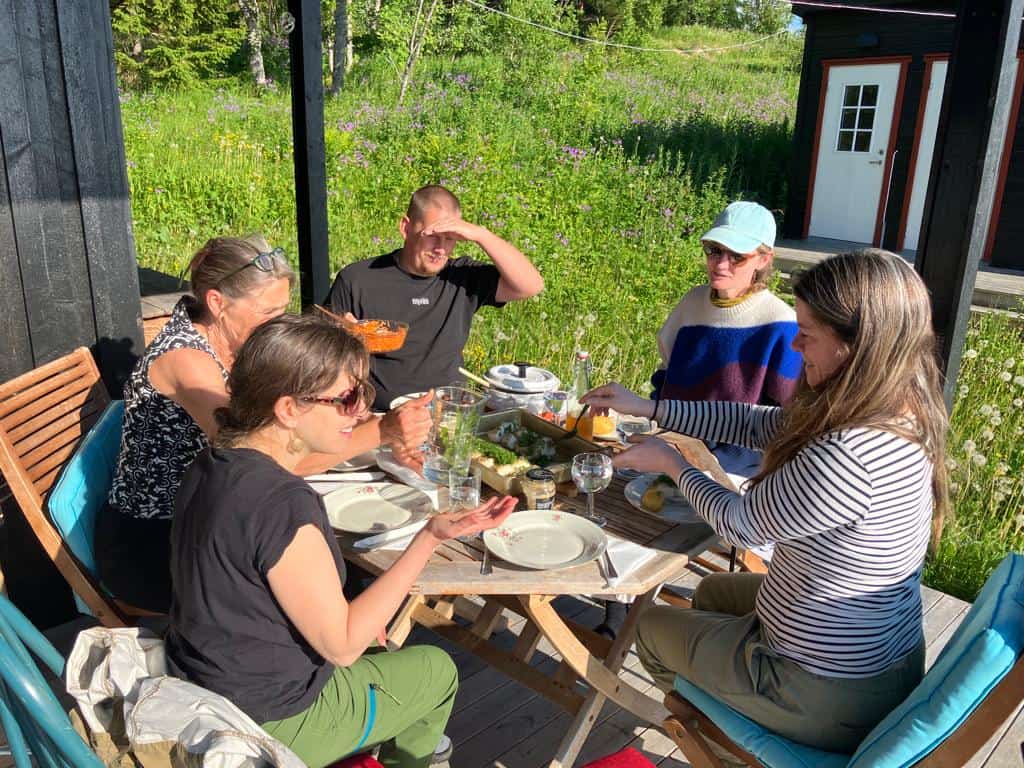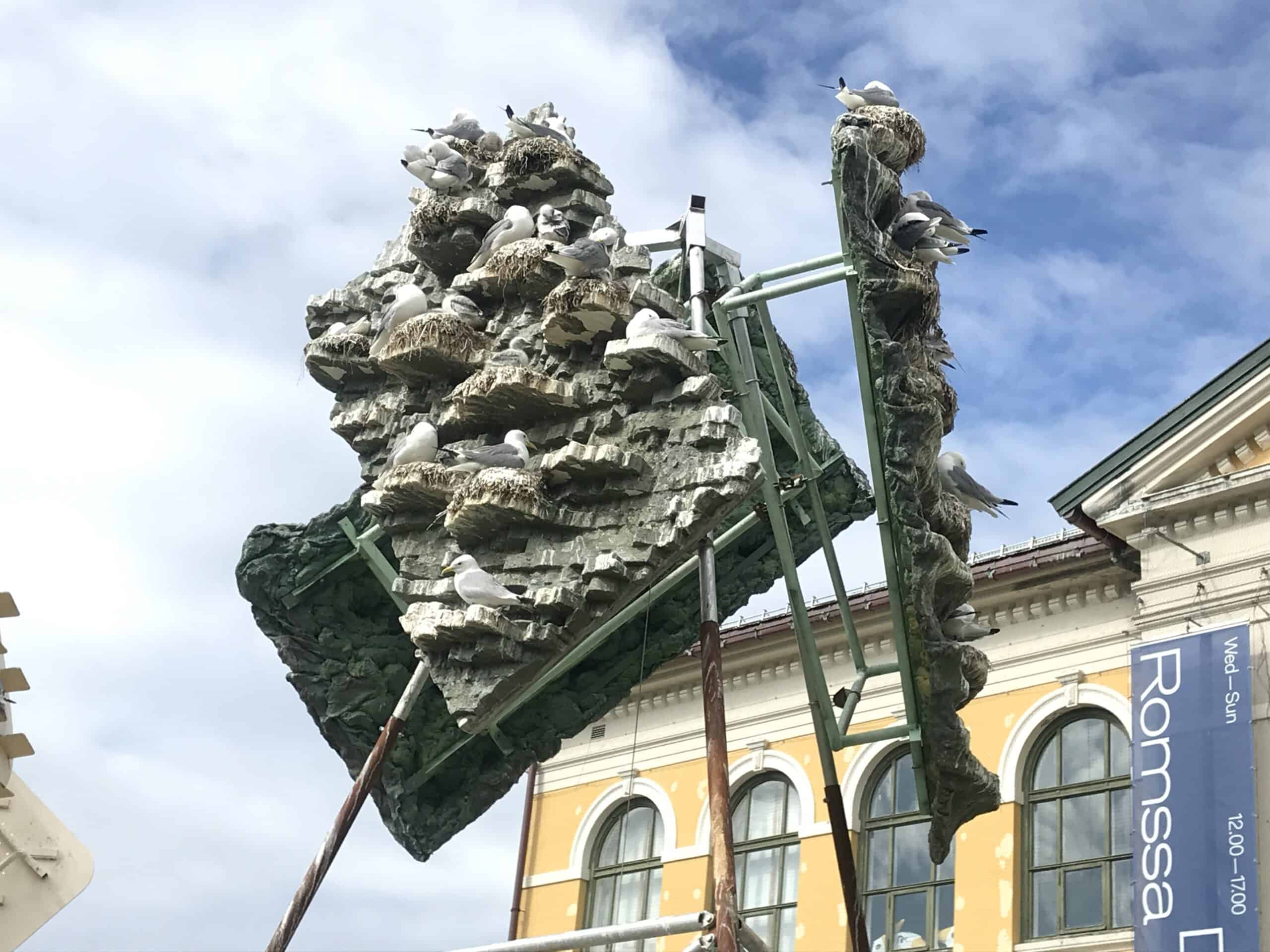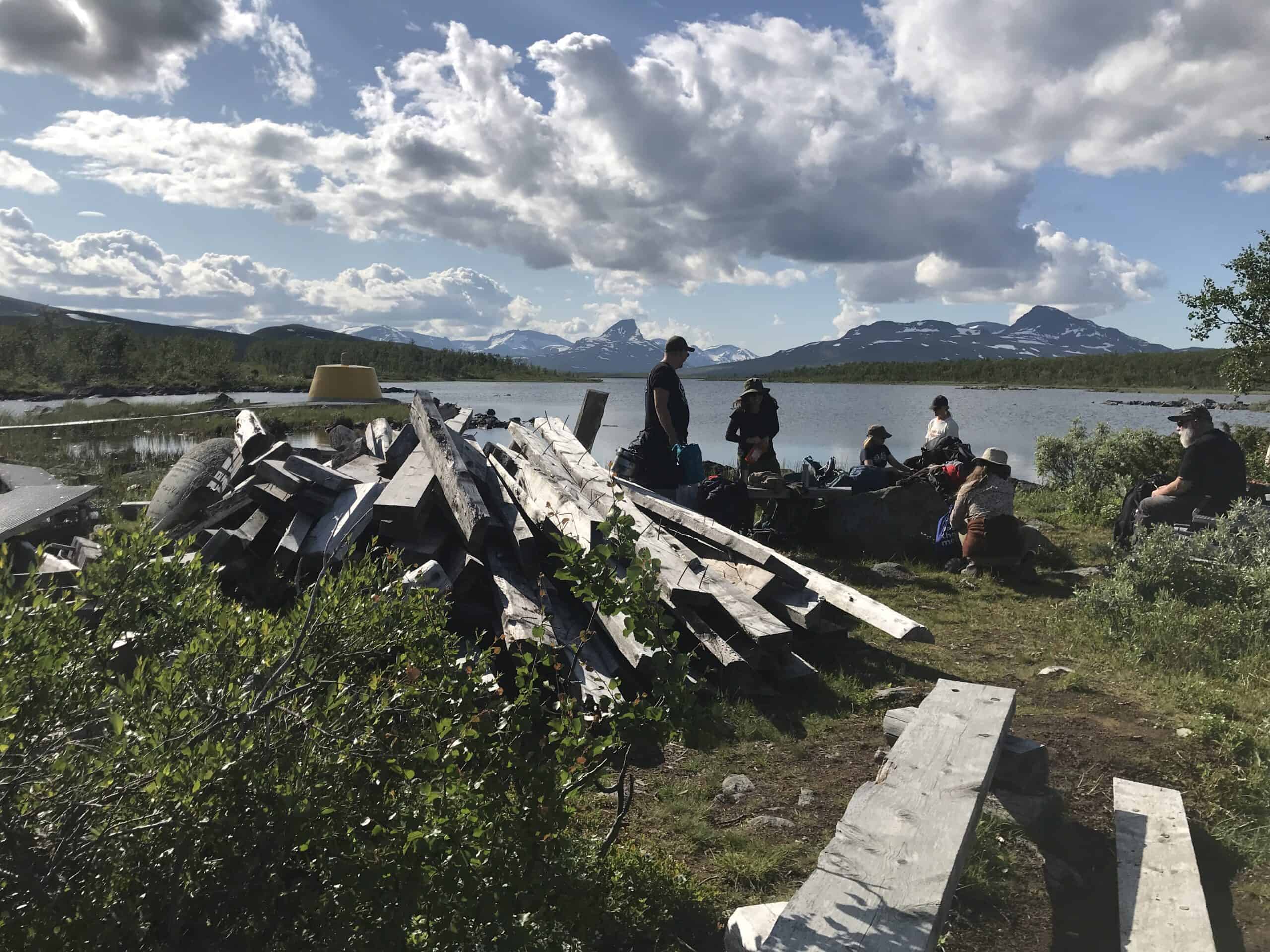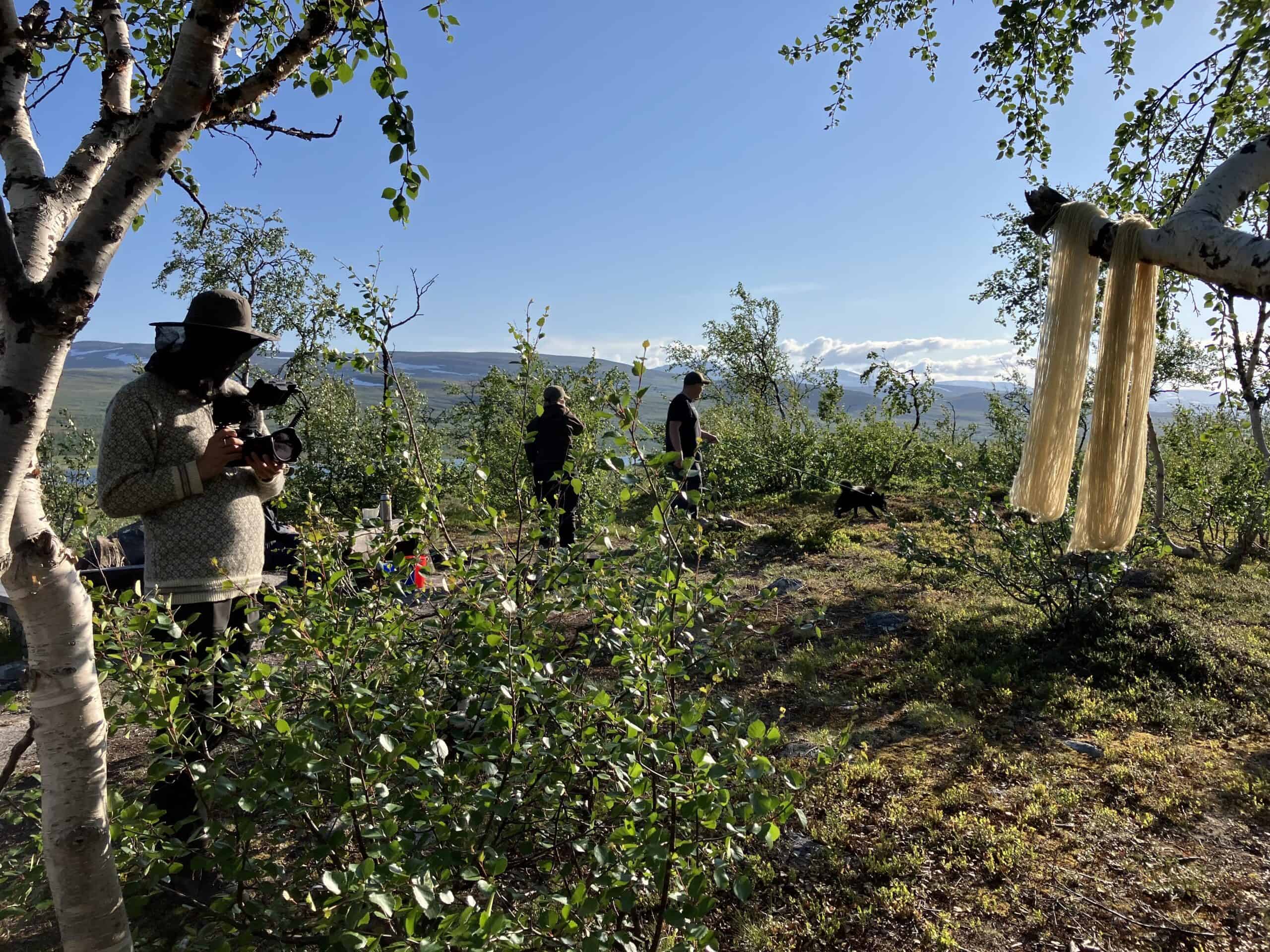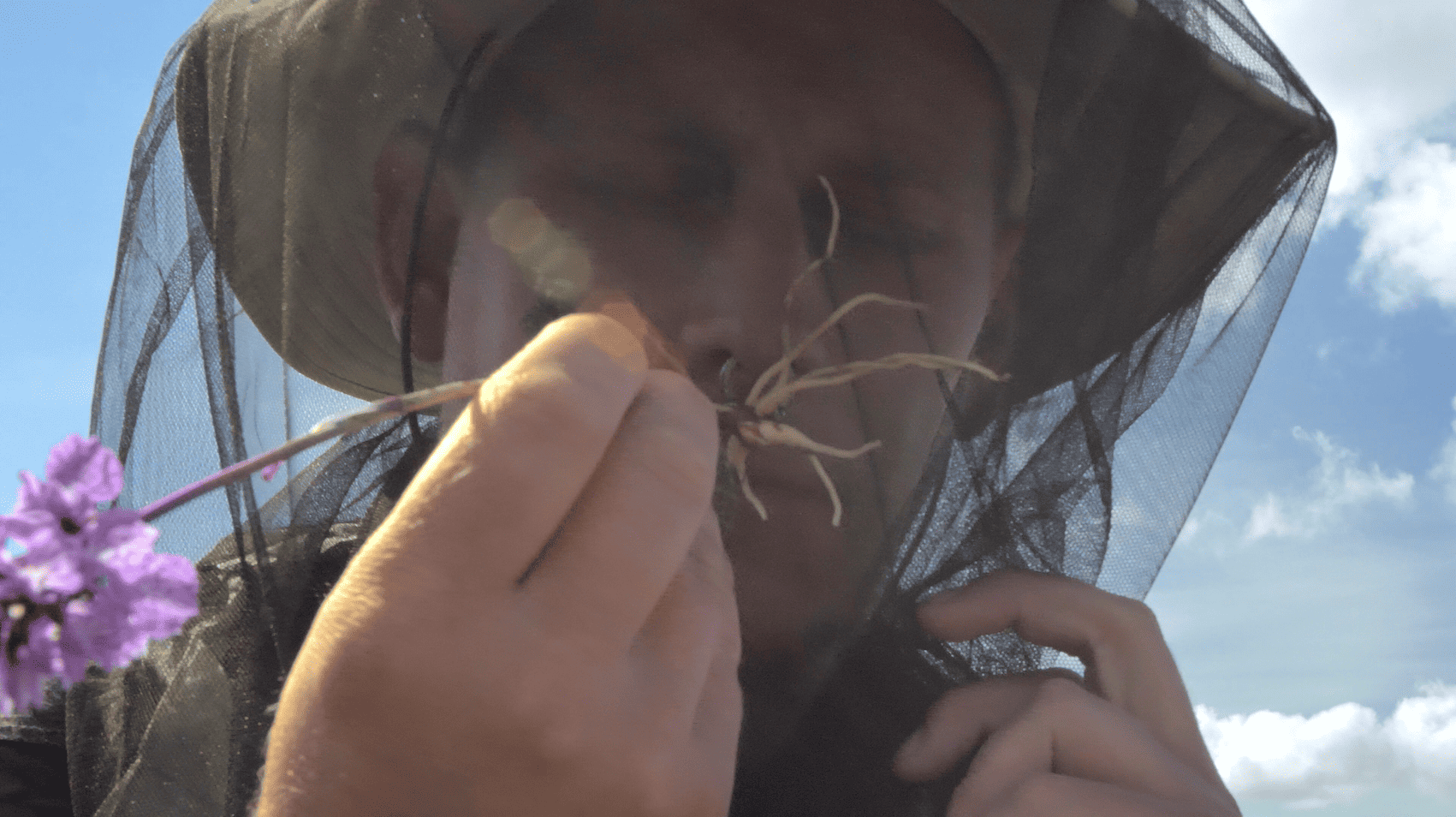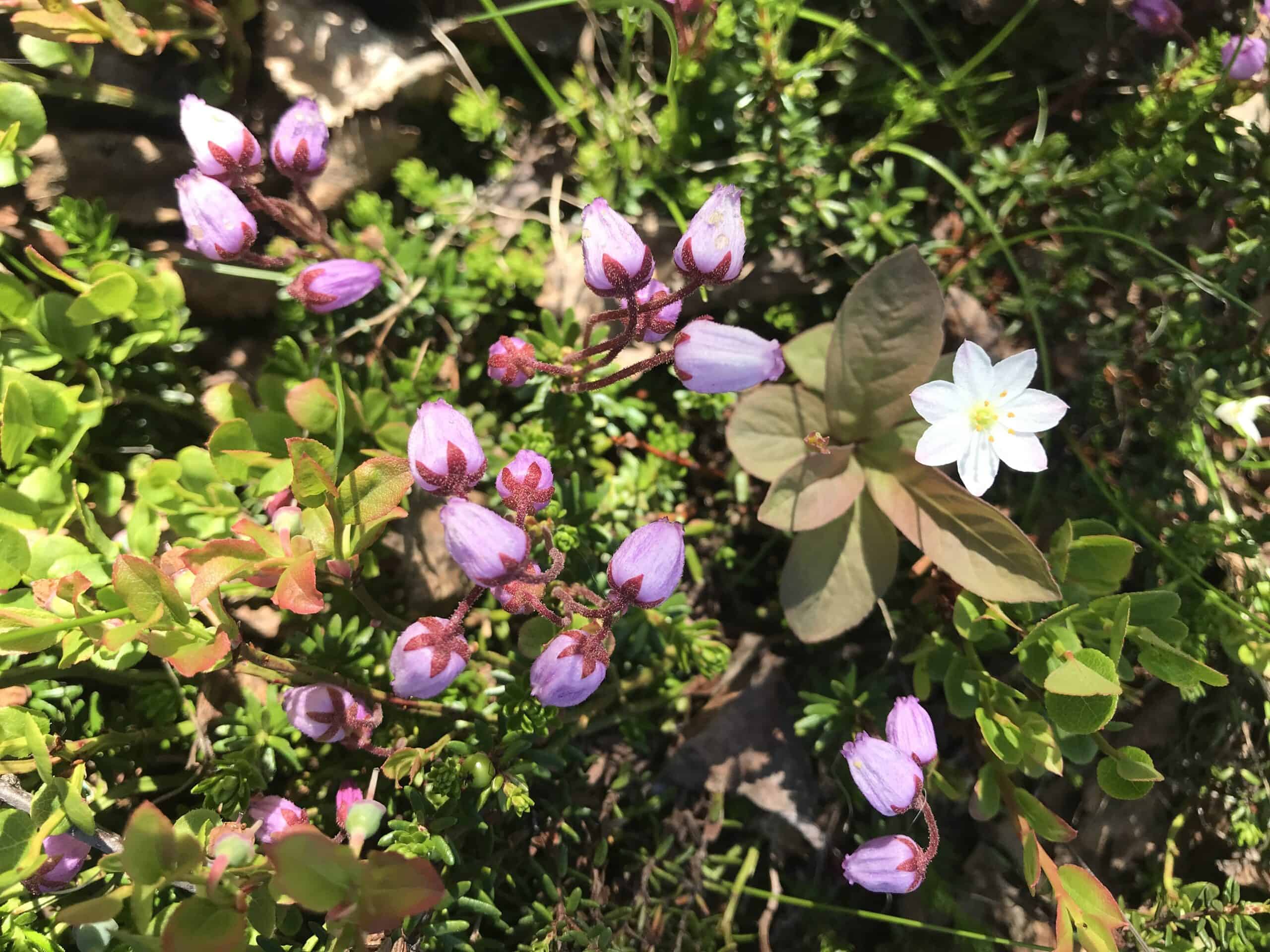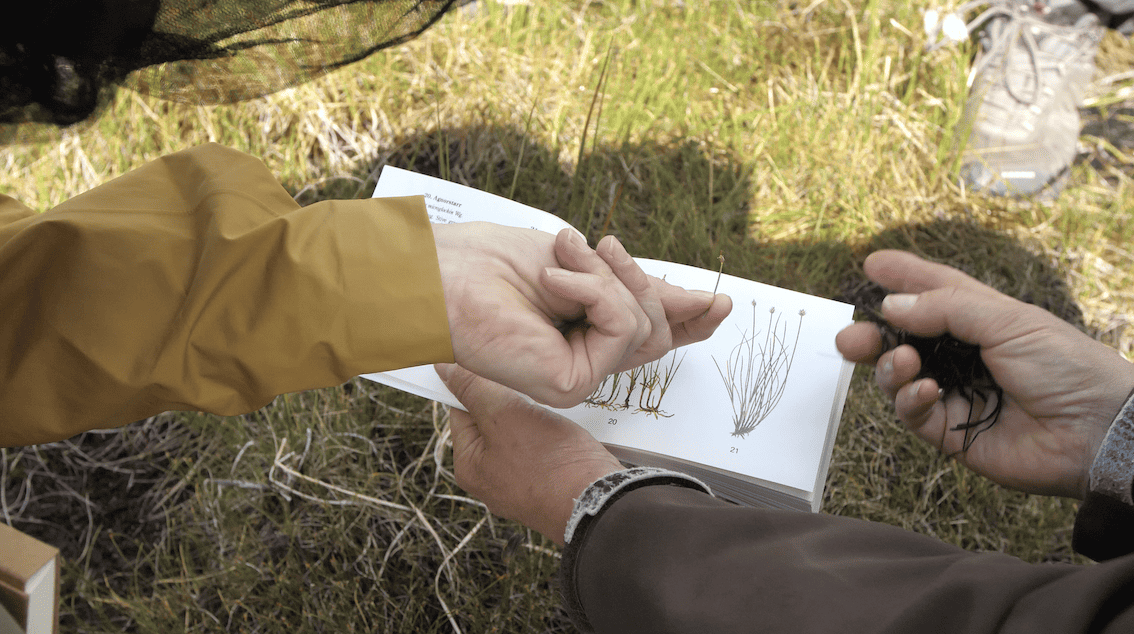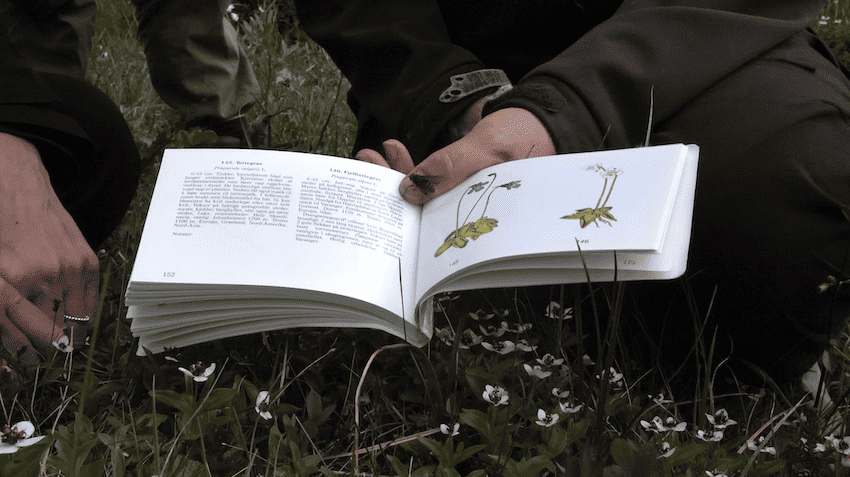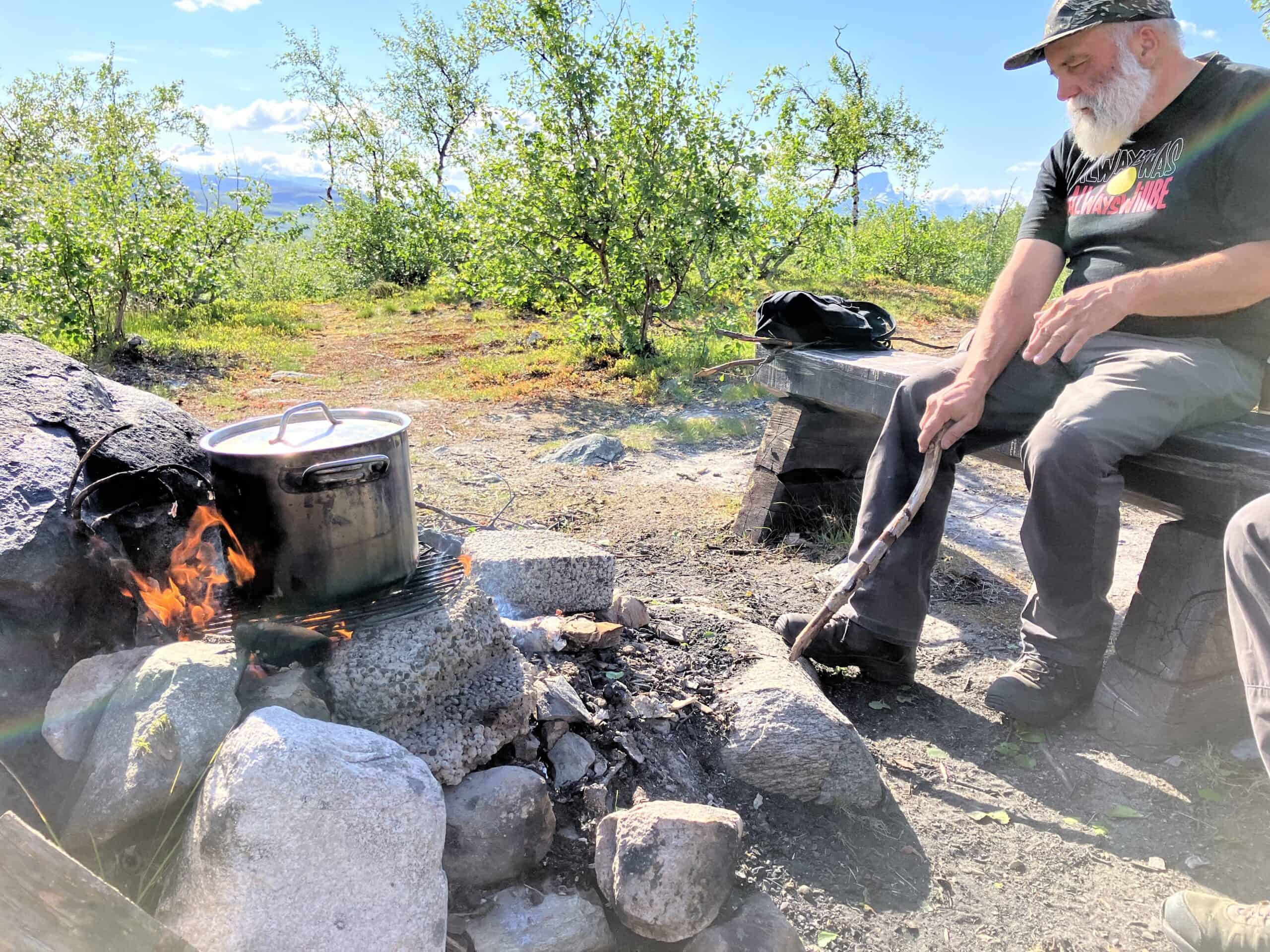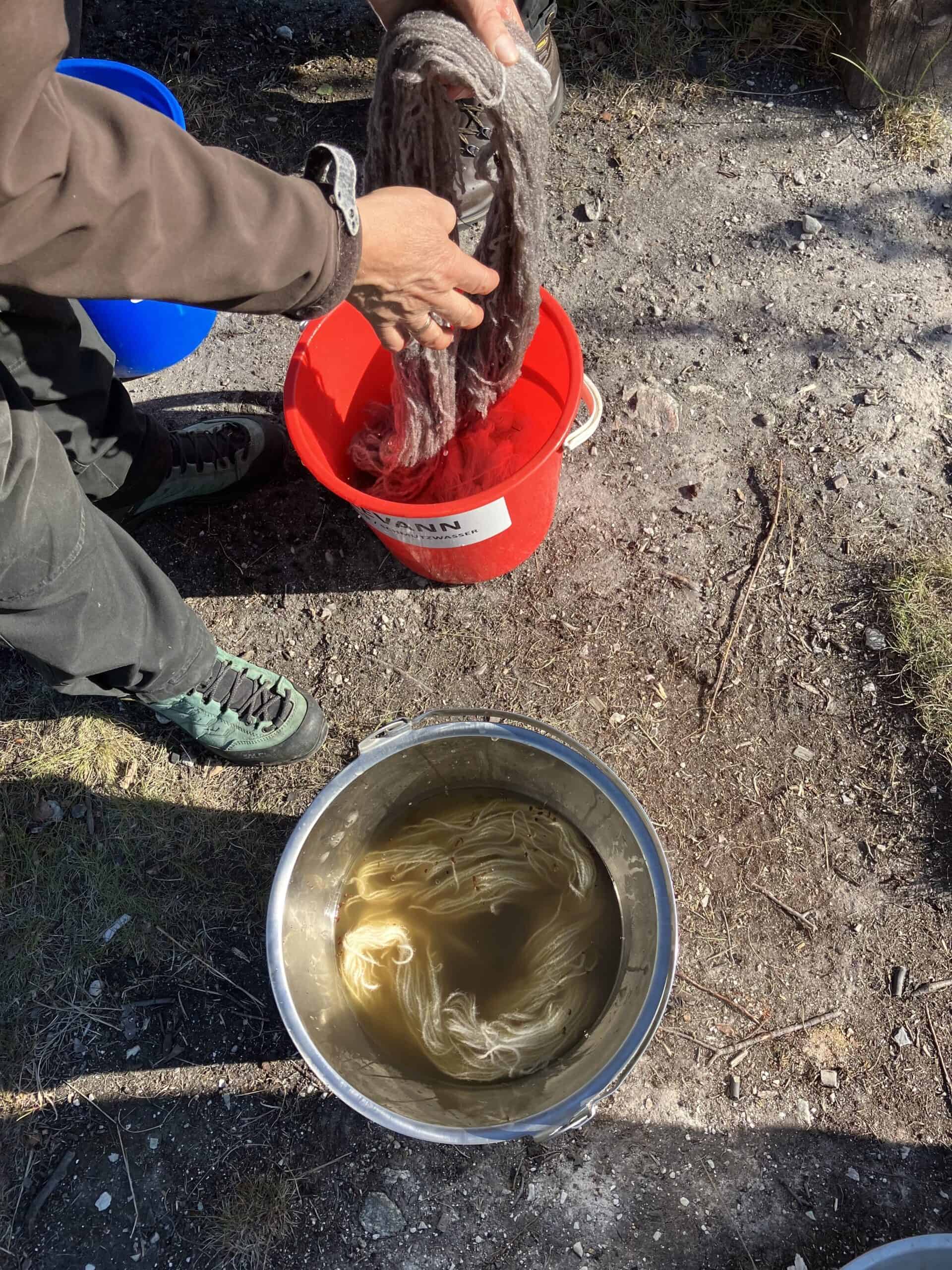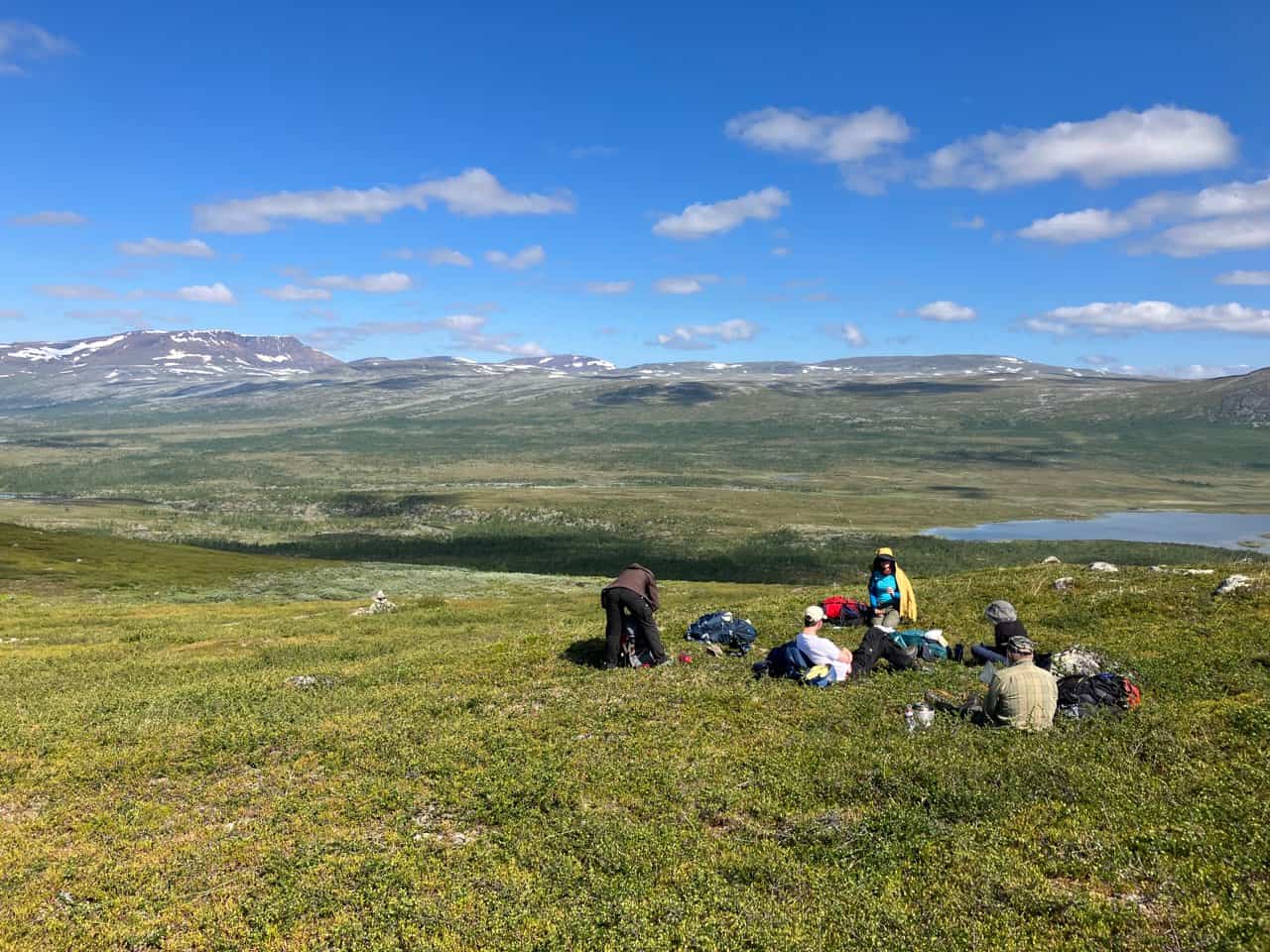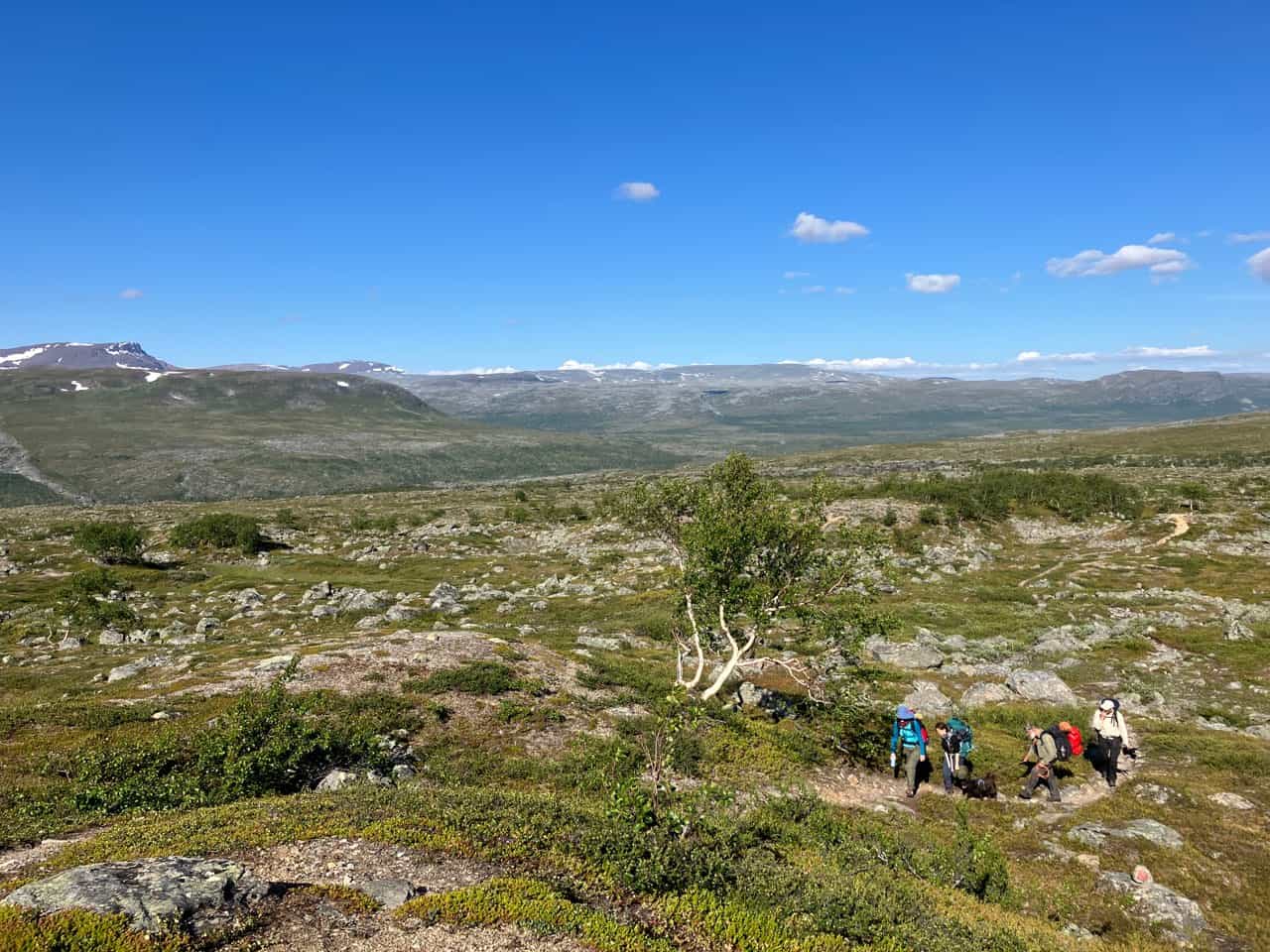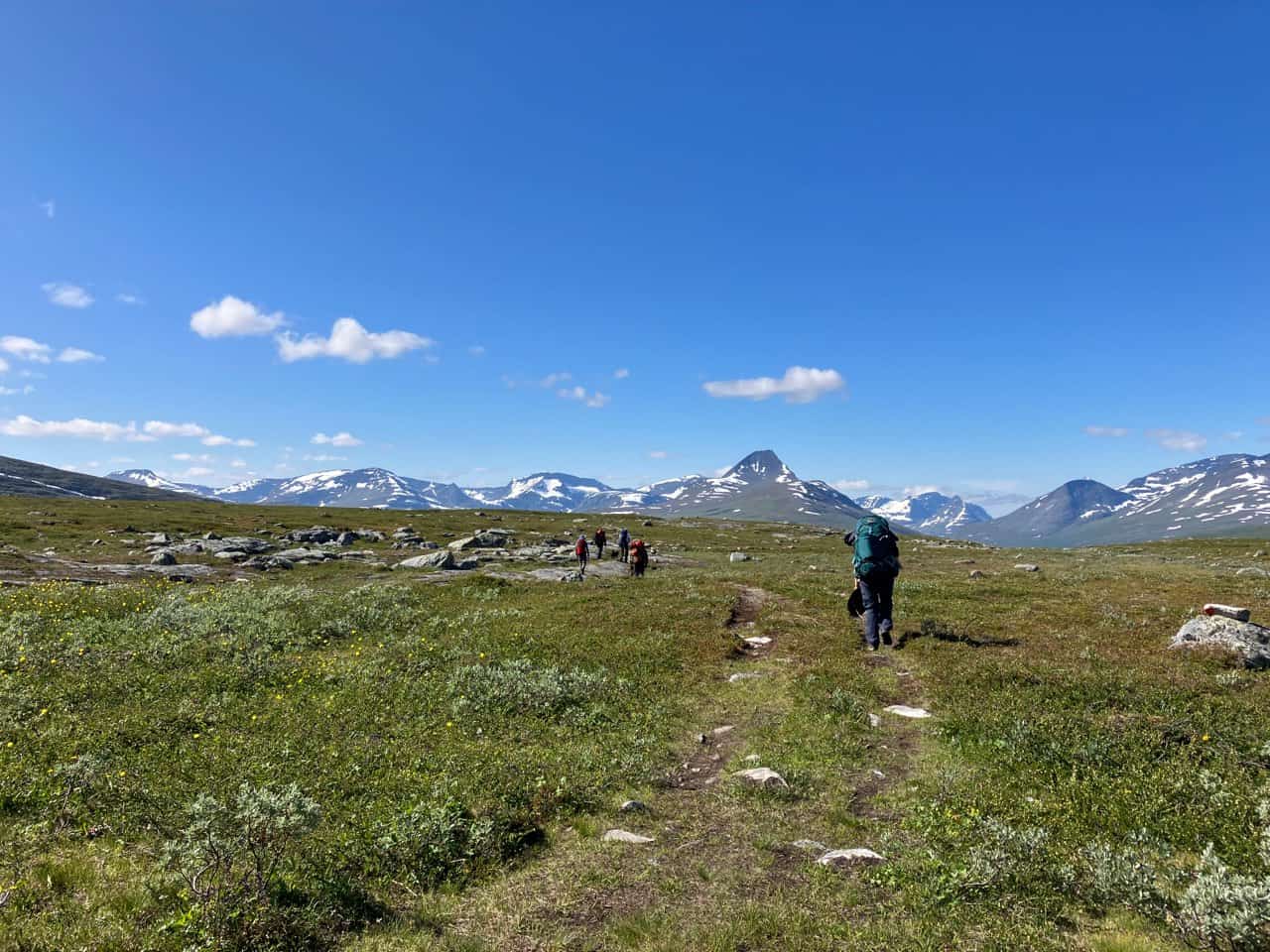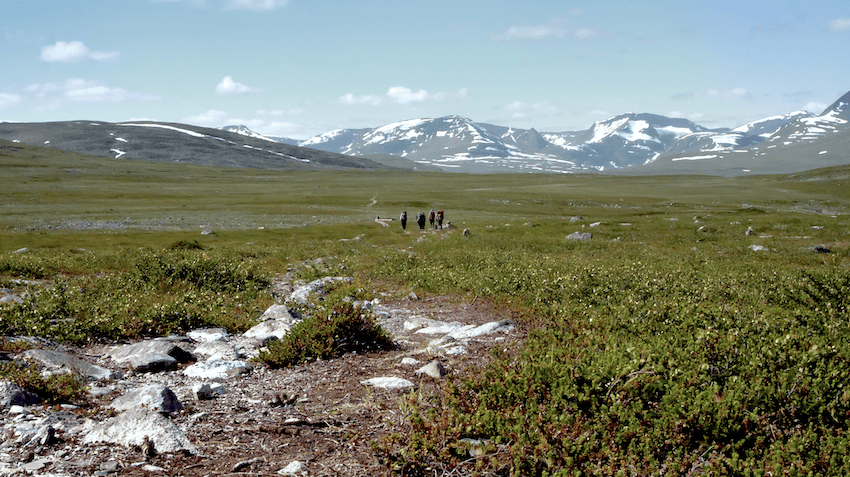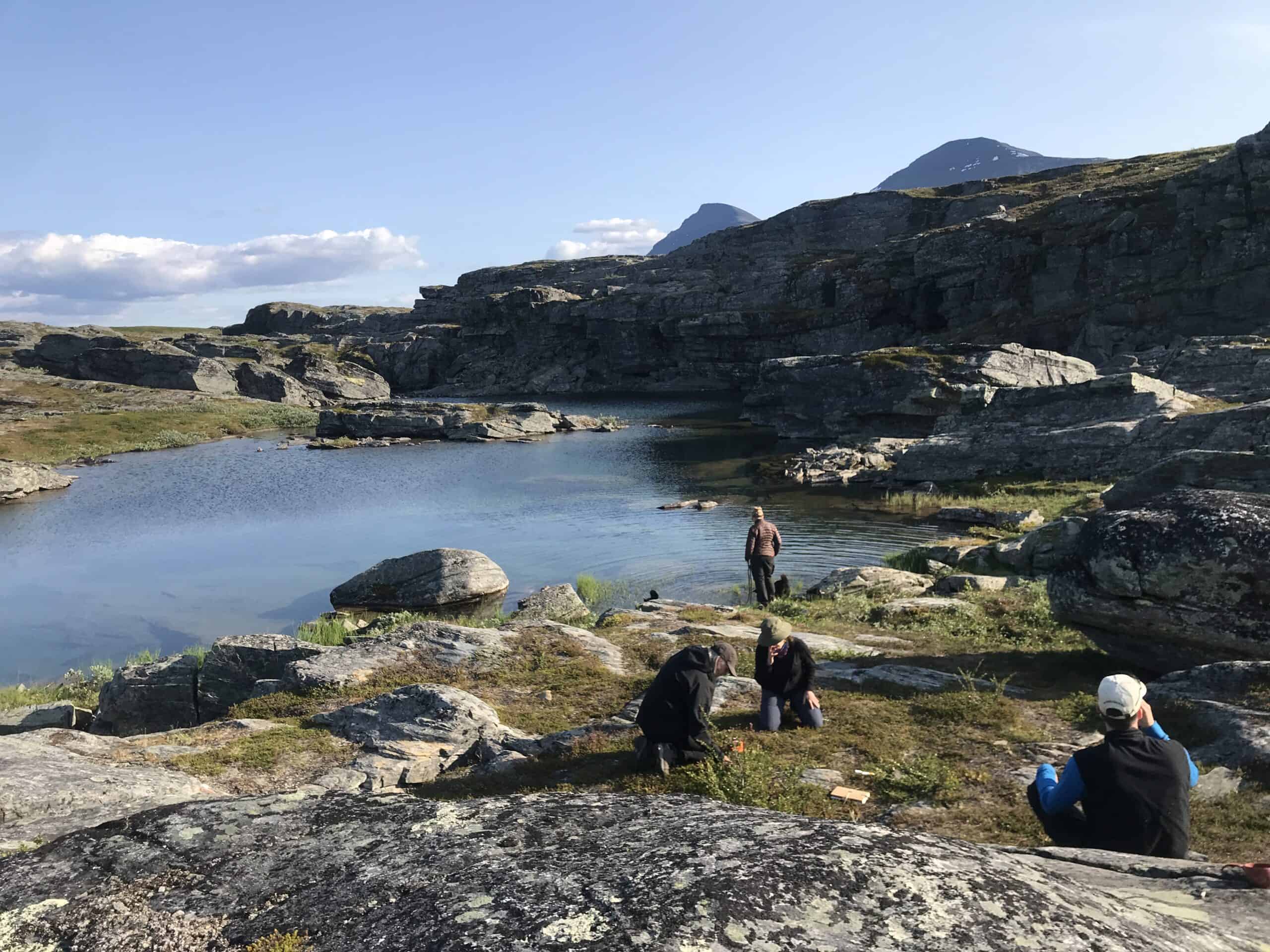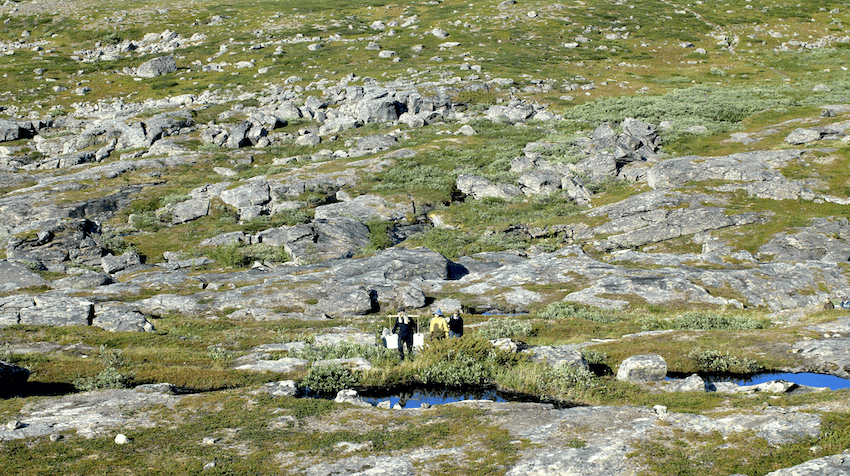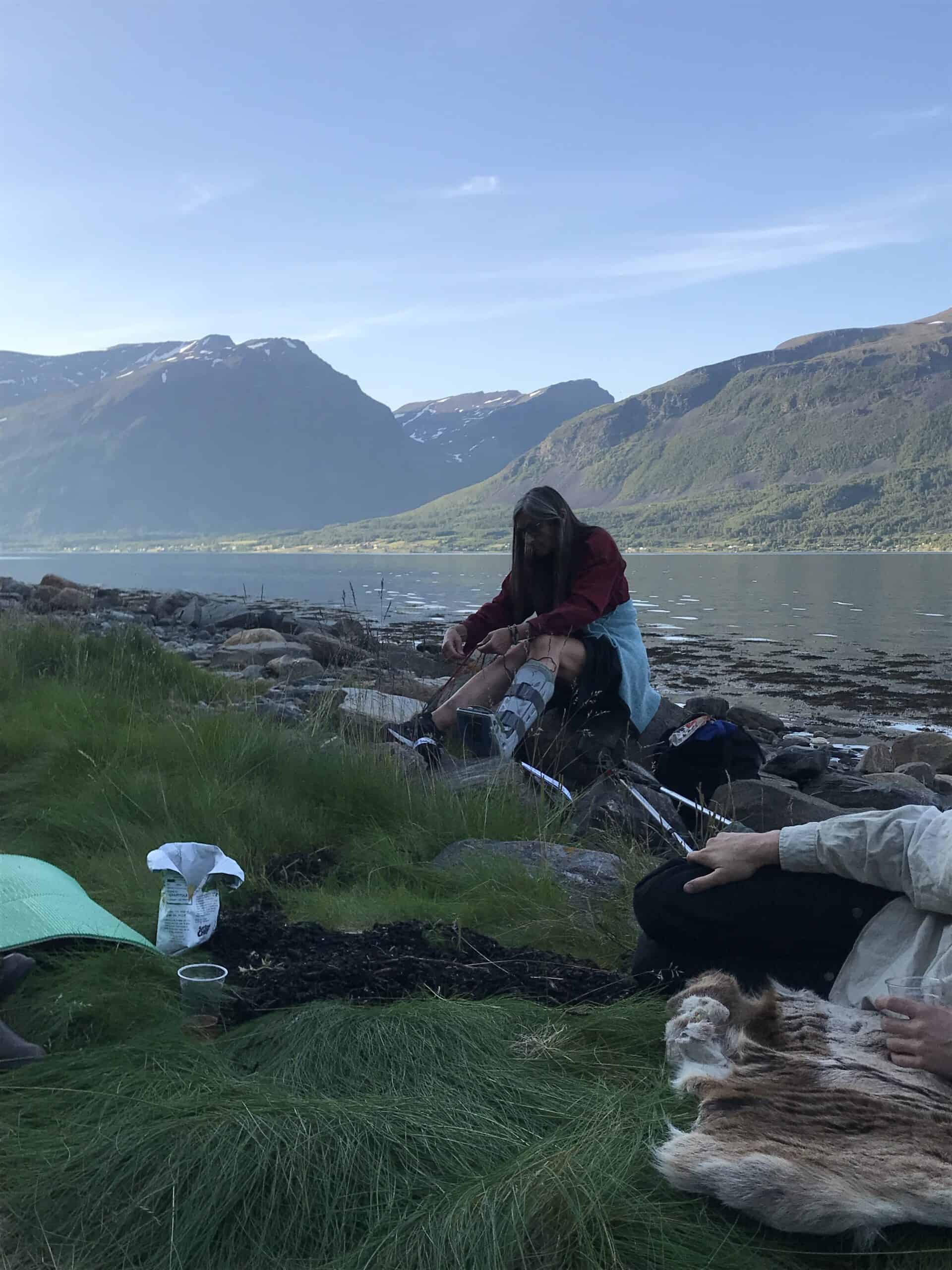WHEN
6 – 12 July, 2023 mountain hike across Sàpmi and 12 -14 July, 2023 in Olmmáivággi (Manndalen)
WHAT
Ensayos research residency in the form of a five-day hike to sense and examine visible and invisible borders, human and other-than-human migration routes across waterways, alpine mountains and peatlands walking across parts of Sápmi (the present-day nation-states of Norway, Sweden, Finland and Russia).
Upon the first two days of arrival Ensayistas from New York, Australia and Southern Norway joined local hosts Karolin Tampere and Hilde Hauan Johnsen in Romssa (Tromsø), Northern Norway and were introduced briefly to the city referred to as the ‘Arctic Centre’ for industry, trade, exploration, and more recently tourism and research. We visited art exhibitions 28% and Gába: female resilience at Northern Norway Museum, both a response to gender and indigenous gaps in museum art collection. We also visited I love Seagulls! at Tromsø kunstforening (Romssa Dáiddasiida), an exhibition curated by Camilla Fagerli and artist Kåre Grundvåg about cohabiting with pelagic birds, especially kittiwakes, in urban areas. The exhibition included a Kittiwake Hotel built outside the art center and works by Ensayistas Søssa Jørgensen and Geir Tore Holm. Kittiwakes are a highly endangered seagull species that due to climate change and displacement have sought shelter in areas along the coast, highlighting divided opinions amongst the urban populations on sharing space with non-human species.
Hosting us at her family cabin[3] on the coast of Berg, artist Hilde Hauan Johnsen shared with us over 40 years of her plant dying practice, processes and textile works. Her creative research on border zones, changing ecologies and migration, alongside her lifetime of local mountaineering experience were important sources of inspiration and preparatory work ahead of the walk.
After two sunny nights on the island of Romssa (Tromsø), we travelled to the beginning of our 5-day hike, freely traversing uncontrolled checkpoints of the national border into Kilpisjärvi, Finland to meet the rest of our local members, Søssa Jørgensen, Geir Tore Holm with dogs Mirjá and Siidii and artist, filmmaker and curator Magnus Skei Holmen. We travelled in M/S Maria, following the border that invisibly divides the lake between the present-day nation states of Sweden and Finland. We disembarked in Malla Strict Nature Reserve and continued by foot to Golmma riikka urna (Kolmen valtakunnan rajapyykki Treriksrøysa, Treriksröset/The Three-Country Cairn) which is the northern-most international tripoint in the world marked by a concrete yellow frustrum in the Golddajávriin lake in Storfjord. This is where our first coffee break of many took place, discussing national border changes and forced migration or restriction on movement throughout history due to war and treaties throughout the 18th and 19th centuries, as well as later acknowledgment of the rights of Sami reindeer herders to freely cross the Norwegian and Swedish border with their herds. Traces of how the national borders impact these rights today was visible in the dilapidated border fencing dressed in plastic and fabric curtains to deter reindeer crossing.
In the evening we arrived at Goldahytta, which is part of a Norwegian cabin network established and managed by Den Norske Turistforening (DNT) – the Norwegian Trekking Association. Since the 1800s, DNT’s aim is to establish and provide means to easily access Norway’s ‘wilderness’. Two nights and one day were spent here to collect birch and dye wool yarn, listen, smell and lay in the bog close by. Another two nights, and one day were spent at our second destination Gappohytta, cabins built on 708 meters above sea level, a stone’s throw from the swedish border. There we swam in the Gáhppojohka river, lay on the boulders and shared research, coffee and fascial massages. Our night was spent responding to Vanessa Machado de Oliveira’s provocation to write a prayer for our shit and the land that receives it, thinking beyond our own digestion – both uncontrollable laughter and an awareness of the seriousness of the topic ensued.
Along our hiking journey, we gathered, with Geir Tore Holm, edible and medicinal plants asking ‘what does the border taste like?’ Søssa Jørgensen looked for unique flowers and stories related to them. With Simon Daniel Tegnander Wenzel, we smelled plants and heard about how scents are composed and extracted. Caitlin Franzmann guided a plant oracle card reading with her self-developed deck. Randi Nygård talked about her work with peatlands, language and Sabima. All the while, Karolin Tampere searched for and tied together loose threads along the way. Magnus Holmen with his camera became a parallel floating documentary tool in the form of a lens. Conversations emerged based on impressions, history and thoughts around being in, and with, our bodies in these landscapes.
After a lengthy last leg of our hike passing the Bárras mountain we travelled to Geir’s home town Olmmáivággi to reunite with Hilde and attend the 32nd edition of the international indigenous festival Riddu Riđđu. ‘Is this the Truth?’ was a panel discussion at the festival where several of the members from The Truth and Reconciliation Commission discussed their work documenting the injustice committed against the Sami, Kven, Norwegian Finns and Forest Finns. The Commission was set up to investigate the Norwegianisation Policy and lay the groundwork for the recognition of the past injustices and ongoing inequalities experienced by the Sámi and Kvens/Norwegian Finns during and following the Policy’s enforcement. The 700-page report contains The Commission’s proposed measures for reconciliation including strengthening the languages, truth-telling and the importance of culture and art in these long term processes. Parallels and divergences were drawn with the reconciliation processes unfolding in Australia as part of the Uluru Statement of the Heart.
The summer continued and some of us drove a few hours further south to take part in the 20 year Anniversary program of Sørfinnset skole/the nord land. Sørfinnset skole/ the nord land examines how contemporary art can function in a long-term dialogue with a small coastal community. The trans-oceanic, archipelagic and interdisciplinary nature of Sørfinnset skole/the nord land was an inspiration for the conception of Ensayos – a collective journey that has traversed oceans and coastlines, followed waterways and led us down into the bogs.
WHY
Because peatlands know no borders and we can learn much from alpine bog ecologies about histories, movement, relations and transformation.
Because asking what it means to belong and to be a body embedded in the landscape (including our shit) open ups possibilities for truth telling, care, reciprocity and healing.
WHO
Caitlin Franzmann, Hilde Hauan Johnsen, Magnus Skei Holmen, Geir Tore Holm, Søssa Jørgensen, Denise Milstein, Randi Nygård, Karolin Tampere, Simon Daniel Tegnander Wenzel
HOW
The mountain walk was initiated by Ensayista Karolin Tampere, in connection with her PhD research fellowship at Tromsø Art Academy, UiT – The Arctic University of Norway and Faculty of Fine Art, University of Bergen (2022-2025). Support has been provided by public funding bodies for art and culture activities in Norway: Billedkunstnernes Vederlagsfond, Norwegian Art Council and The Art Program for Local Communities (LOK) KORO – Art in Public Space Norway. This project is also supported by the Queensland Government through Arts Queensland.

